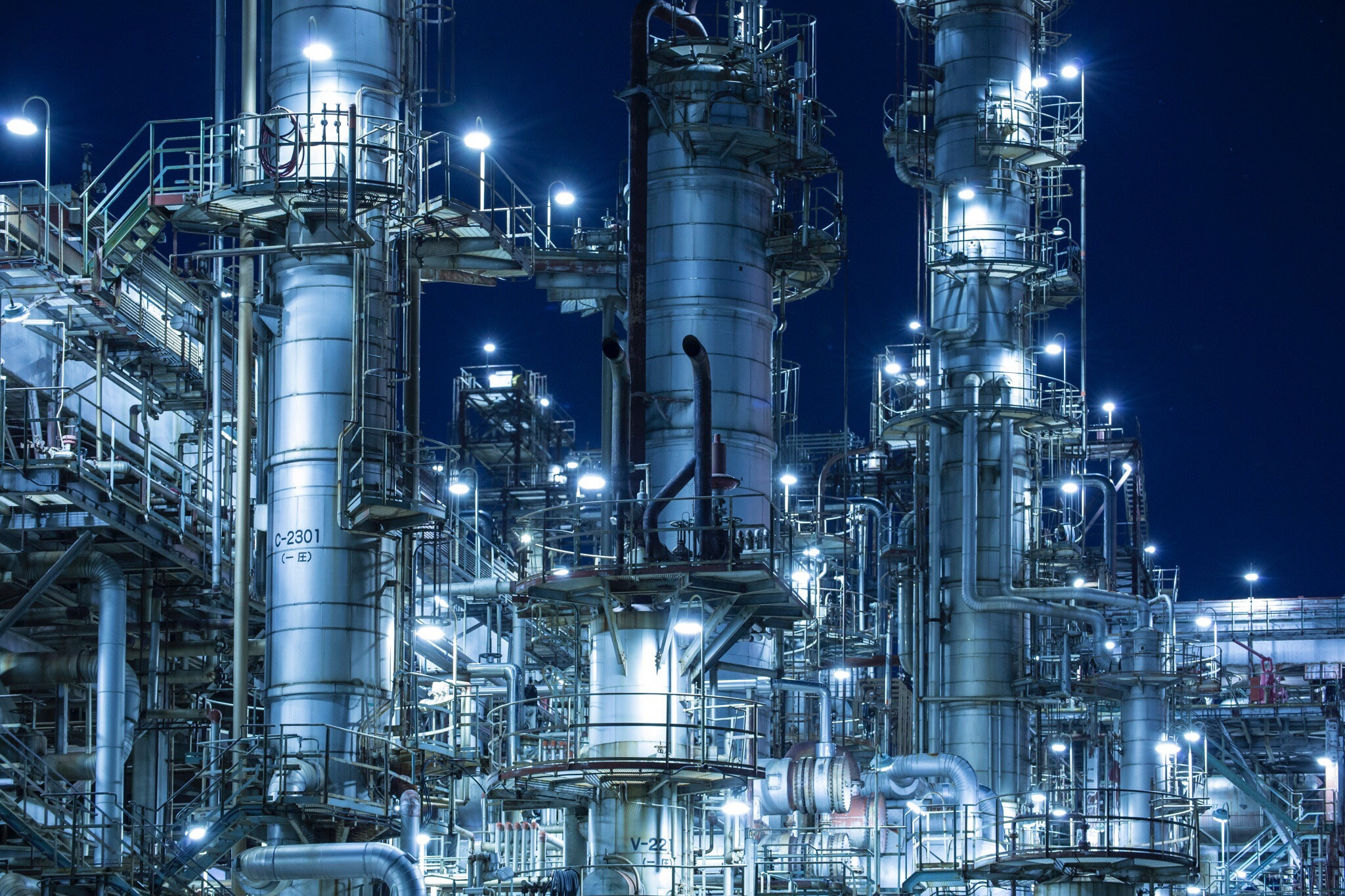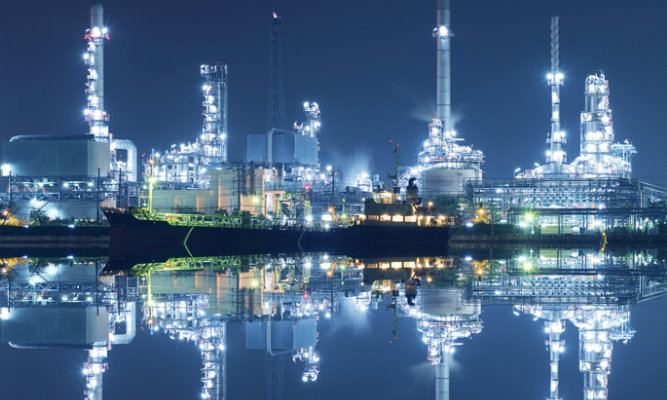
Silicone-Based Coating Mitigates Corrosion Under Insulation (CUI) in Petrochemical Plants
Heat-Flex® High-Temp 1200 withstands temperature fluctuations, thermal shock and other upset conditions to protect against hidden CUI
by Thomas Crenshaw, Downstream Business Development Manager, Sherwin-Williams Protective & Marine
Corrosion under insulation (CUI) is one of the costliest problems in the petrochemical industry. It also presents a high degree of potential danger. CUI occurs when moisture mixed with contaminants infiltrates insulation, encouraging the development of corrosion cells on the steel underneath. These cells can gradually – or even rapidly – corrode through the substrate if it’s not properly coated. Assets prone to CUI include piping, process vessels, exchangers and storage tanks that operate in environments prone to aggressive attack that can adversely alter the condition of the asset. When an asset becomes compromised due to CUI, it can lead to unnecessary outages and possibly a more dangerous situation that could affect the workers themselves. Because CUI is hidden and often isolated to small areas of an asset, it’s not easy to pinpoint. By the time it’s discovered, the damage can be significant and very expensive to rectify.
The cladding installed on top of insulation might hold clues to the possible presence of CUI lurking below, but for the most part, the only way to find CUI is through inspections. However, corrosion can occur between assessments, and the complete inspection of an entire insulated asset may not be practical at times. Therefore, it’s critical for assets that will be hidden under insulation to be protected with some sort of an anti-corrosion coating system that will mitigate the effects of CUI and withstand various environmental and operational stresses. Properly selected and applied coatings are the most cost-effective method for corrosion prevention and provide the greatest service life of any other corrosion prevention methods.
Contact Us to Learn More
Numerous coating systems have been used to attempt to curb CUI, with varying results based on environmental, startup and operating conditions. For example, standalone inorganic zinc-based coating systems without a topcoat have failed and are no longer recommended. Various epoxies have performed well, but not when asset temperatures operate at 450°F.
Fortunately, innovative silicone-based coatings, like Heat-Flex High-Temp 1200 from Sherwin- Williams, are proven not only to protect insulated assets from CUI but also to withstand a wide range of stressful conditions – including sudden temperature swings, thermal shocks and other upset conditions – that occur in petrochemical and refinery facilities (Figure 1). By mitigating these conditions, Heat-Flex High-Temp 1200 remains intact as a continuous protective layer under insulation for much longer periods compared to alternative coating systems.
THE INSULATION DILEMMA
Piping and other assets in petrochemical plants typically need insulation due to their operating temperatures. While some piping operates at ambient temperatures, other pipes are insulated because the materials flowing through them require heat to create operational efficiency flow. Some of these materials also require heat in storage so they don’t break down into byproducts. Without insulation, piping and storage tanks would lose too much heat, decreasing the efficiency of the process.
Insulation also protects workers who might accidentally come into contact with assets that have high operating temperatures and represent a risk for skin contact burns. Even some assets running at ambient temperatures require insulation to protect workers during steam cleaning operations. For example, piping can reach 350-450°F when it is cleaned or “steamed out,” which is an example of an upset condition.
Figure 1. Heat-Flex High-Temp 1200 is applied direct-to-metal to large pipes and valves before shipping to construction sites to protect insulated assets from CUI.
The upset condition of a steam out causes asset temperatures to rise rapidly during cleaning and drop rapidly afterwards, creating a thermal shock on the steel and the applied protective coatings. Thermal shock also occurs when hot materials enter an asset that is currently at ambient temperature. These rapid temperature differentials can stress and damage equipment, as well as coatings.
If seams or gaps appear in the jacketed insulation, or if the asset is poorly designed, incorrectly installed or inadequately maintained, moisture containing corrosion products and other contaminants can leach through the insulation and reach the steel substrate. Moisture can come from rain, condensation, steam, fallout/drift from cooling towers, and even from frozen or condensating piping above the insulated asset. If contaminants in the moisture include soluble salts, corrosion rates can accelerate. Although CUI can occur anywhere along an insulated asset, it’s more likely to develop at pipe ends and elbows, near flanges and at tank bottoms, since gravity takes moisture to those areas.
TEMPERATURE SWINGS
Heat exacerbates the corrosive process. The reaction is similar to water dripping on a hot stovetop pan, except at a petrochemical plant, the water is contaminated and becomes trapped against a hot pipe or other equipment under insulation – perhaps never drying out. The most aggressive spot for CUI to begin is between 120°F and 350°F. At those temperatures, moisture won’t heat up enough to evaporate under the insulation, so when the temperature decreases, the water remains in direct contact with protective coatings, accelerating the potential for coating degradation and subsequent CUI.
In addition to steam outs, another upset condition that can promote CUI is the sudden flushing out of a material from a production line. This happens when analytical testing determines the composition of a processed material is not correctly proportioned, or when the material is contaminated. The material is returned under pressure and high heat backward through the line for reprocessing, creating thermal shock if upstream components have cooled off. Just as in steam cleaning, the protective coatings applied to steel under insulation must accommodate this thermal shock.
A third upset condition involving thermal shock occurs when machines are turned on, either for the first time or after repair or maintenance. Coatings might be engineered to withstand normal machine operating temperatures of, say, up to 350°F, but if the temperature spikes to 400°F during startup, an applied coating can bake and crack if it’s not compatible with that elevated temperature.
Thermal shock is also a possibility when a hot surface cools rapidly. For example, a drop of cold moisture hitting a pipe running at 350°F will result in thermal shock on that concentrated area – and all it takes is one drop on the wrong spot at the wrong time to initiate the corrosion process, with that moisture then accelerating CUI if it doesn’t evaporate. The cooler operating temperatures associated with compressing and cooling in the production of plastics also creates thermal shock scenarios and is a growing contributor to CUI.
INSPECTION HEADACHES
Inspections – which involve drilling a plug into the pipe jacket and insulation to enable direct access to the substrate – can locate CUI but only within limits. One problem is that inspections might take place just once a year, or even once every five or 10 years. Also, because CUI is isolated, it’s easy to miss since inspections rarely cover the entire length of an insulated pipe or asset. Even if an inspection is done where exterior signs of moisture penetration are present, CUI can occur elsewhere on the asset, since moisture travels to the lowest point once it infiltrates. In addition, once the inspection plug is pulled out, the hole it leaves behind must be sealed correctly, otherwise moisture has another entry point.
A NEW ERA IN CUI MITIGATION
Coatings can help prevent CUI, but many traditionally specified coating systems have failed in mitigating the issue. Epoxy resins, for example, are suitable for temperatures up to 400-450°F, if those temperatures remain constant. However, if thermal shock occurs, many epoxies tend to turn brittle and crack. That’s because most epoxies are rigid and inflexible and have a breaking point when heated or cooled rapidly.
For years, the primary coating used to mitigate CUI on pipes and assets in petrochemical plants was inorganic zinc, which is suitable in temperatures below 120°F and above 350°F. It is easy to apply and cheap when applied in a shop. Plus, only one coat was presumably needed for protection from CUI. However, field studies have determined that inorganic zinc coatings break down in the CUI sweet spot of 120-250°F when they don’t have a topcoat (Figure 2). New standards now discourage the use of inorganic zincs under insulation without a topcoat.
NACE International (now AAMP) has consistently recognized the challenges with CUI and in 2010 appointed a committee to devise solutions. In 2011 the committee published new CUI mitigation standards under the title, “Control of Corrosion Under Thermal Insulation and Fireproofing Materials – A Systems Approach,” which today is also known as SP0198-2017. The standards recommend which coatings to use, based on temperatures to which they’ll be exposed, on carbon steel and stainless steel assets.
The recommendations, last updated in 2018, include specifying innovative, silicone-based or silicone-based multipolymeric matrix coatings, such as Heat-Flex High-Temp 1200. It’s designed to expand and contract, along with the assets it’s protecting, during extreme temperature fluctuations. Therefore, unlike epoxies, it can perform well against the stresses of thermal shock.
Older types of silicone-based coatings, applied in a thin layer of 1 to 2 mils dry film thickness (DFT), are challenging to prepare and apply on carbon steel, and NACE’s CUI guidelines advise against using them. Heat-Flex High-Temp 1200, in contrast, includes micaceous iron oxide (MIO) and other pigments that add thickness to the coating, making it easier to apply in ambient temperatures. MIO also reinforces Heat-Flex High-Temp 1200, strengthening the product and making it resistant to impacts. MIO formulations, with silicone-oxygen bonding, are also stronger than epoxies, which have carbon-to-carbon bonding.
One important physical characteristic of MIO is that is creates a layered structure in the coating that acts like mirrors, deflecting ultraviolet light, which allows the coating to last longer and degrade slower when subjected to UV rays (Figure 3). This is vital because pipes and bulk valves are often shipped long distances from where they’re made to where they’re used. The journey can take six months to a year in some locations, and sunlight will pound the assets during that time. Epoxies, in comparison, don’t hold up well under UV exposure. Further, once the asset is installed, the layered structure of MIO pigments makes it more difficult for moisture to penetrate the coating and reach the steel substrate. Products with MIO are effective in temperatures ranging from 113°F to more than 1200°F in both open and closed areas. All of this has been verified in Sherwin-Williams labs, using rigorous standards and protocols by the American Society of Testing and Materials.
Heat-Flex High-Temp 1200 also contains a special additive that allows it to cure and harden at lower temperatures. Traditional silicone-based products dry at ambient temperatures but don’t fully cure until reaching 250-350°F. If these older coatings are applied at ambient temperatures without heat curing, the asset might sustain damage when moved or strapped down for transport or installed in the plant. Any spot of coating damage can weaken the coating’s protection and become a weak point for corrosion to attack. However, the curing additive in Heat-Flex High-Temp 1200 makes the coating harder than any other silicone coating in the petrochemical industry. When it comes to stopping CUI, Heat-Flex High-Temp 1200 from Sherwin-Williams offers the flexibility to handle thermal shock and temperature fluctuations, the chemical resistance to hold up in contact with contaminants, and the impact and damage resistance to retain a continuous film on coated assets during handling and installations. It can protect a company’s equipment, save money, prevent disastrous asset breakdowns and failures and keep workers safe.
Figure 2. Pipes coated with just an inorganic zinc-based primer and no topcoat are prone to severe CUI when covered with insulation and operating in the CUI sweet spot of 120-250°F.
Figure 3. Micaceous iron oxide (MIO) pigments embedded in Heat-Flex High-Temp 1200 form a barrier that deflects ultraviolet rays. The layered pigment structure also mitigates the penetration of moisture into the coating.
ABOUT THE AUTHOR
Thomas Crenshaw is Downstream Business Development Manager for Sherwin-Williams Protective & Marine. He is based in Houston, Texas, and has been in the coatings business for more than 30 years. He is a NACE CIP Level III Certified Coatings Inspector. He can be reached at Thomas.Crenshaw@sherwin.com.
Discover More
Industry Expertise and Innovation
See how we help customers find customized solutions for their project and application challenges.
Our Oil & Gas Expertise
Explore our industry solutions and technology to help protect your assets.
LEARN MOREProduct Lookup
Find out more about our innovative coatings for a variety of industries.
FIND A PRODUCT
